Long-distance Versatility
The Nikkor Z 100-400mm F/4.5-5.6 VR S lens is sharp, well balanced, and versatile.
• September 2023 issue
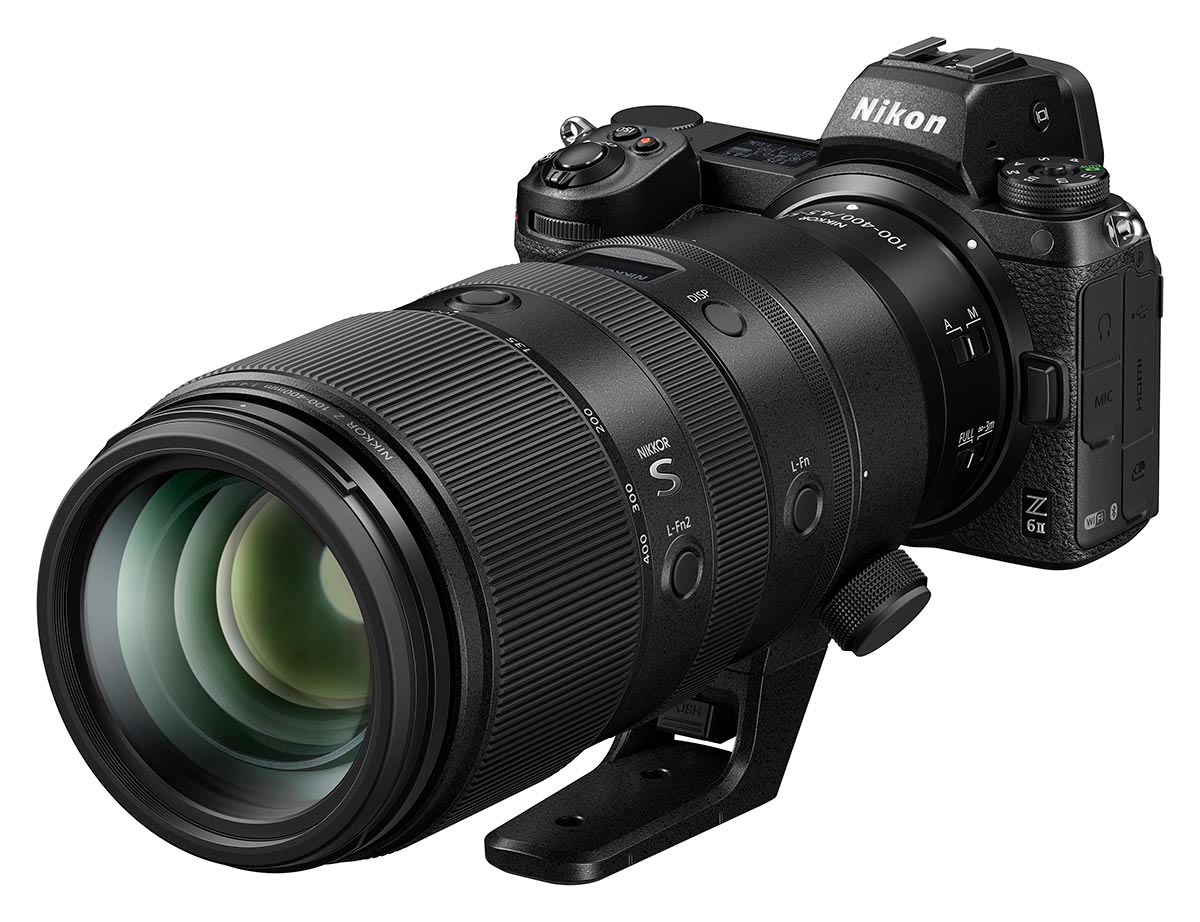
For photographers using Nikon Z cameras, the Nikkor Z 100-400mm f/4.5-5.6 VR S lens is a viable alternative to the Nikkor Z 70-200mm f/2.8 VR S. What you give up in maximum aperture size, you gain in twice the focal length range for the same price. Moreover, it makes up the long end in the mighty trio of Nikkor Z zooms, the others being the 14-30mm f/4 S and the 24-120mm f/4 S. This is a less expensive and lighter alternative to what has been called the holy trinity of zooms—the Nikkor F and Z versions of the 14-24mm f/2.8, the 24-70mm f/2.8, and 70-200mm f/2.8 lenses.
Is it worth giving up the f/2.8 maximum aperture of the 70-200mm? That depends on whether you regularly work in low-light situations or photograph sports. The larger maximum aperture of the 70-200mm f/2.8 VR S allows you to work at a lower ISO or a shorter shutter speed. It’s also an advantage when focusing in low-light situations. But for other kinds of photography, especially environmental portraits outdoors, the 100-400mm f/4.5-5.6 VR S’s extra 200mm range opens up additional compositional opportunities to isolate your subject in the setting. It’s also worth noting that with stacked CMOS sensor cameras like the Z 8 and Z 9 and the vastly improved noise reduction algorithms in Adobe Camera Raw, Lightroom, Topaz DeNoise AI, and DxO software, the high ISO is not the issue it was even a year ago. Used with the Z 7II, Z 8, and Z 9 set for DX (APS-C) format, the 100-400mm makes for a very effective 401 to 600mm f/5.6 lens on a 19-megapixel camera.
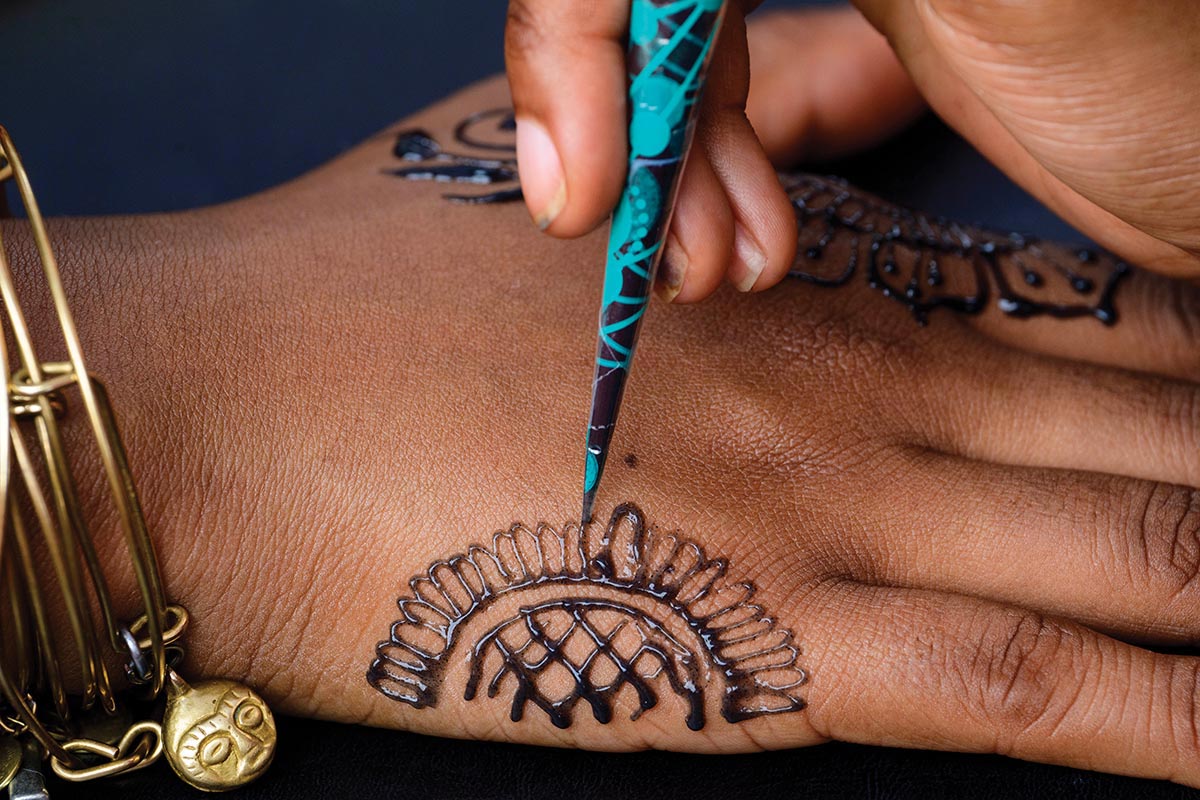
I photographed this image at 400mm at the minimum focus distance to fill the frame with the subject. The lens did a terrific job of renderinga razor sharp image. VR and IBIS were used.
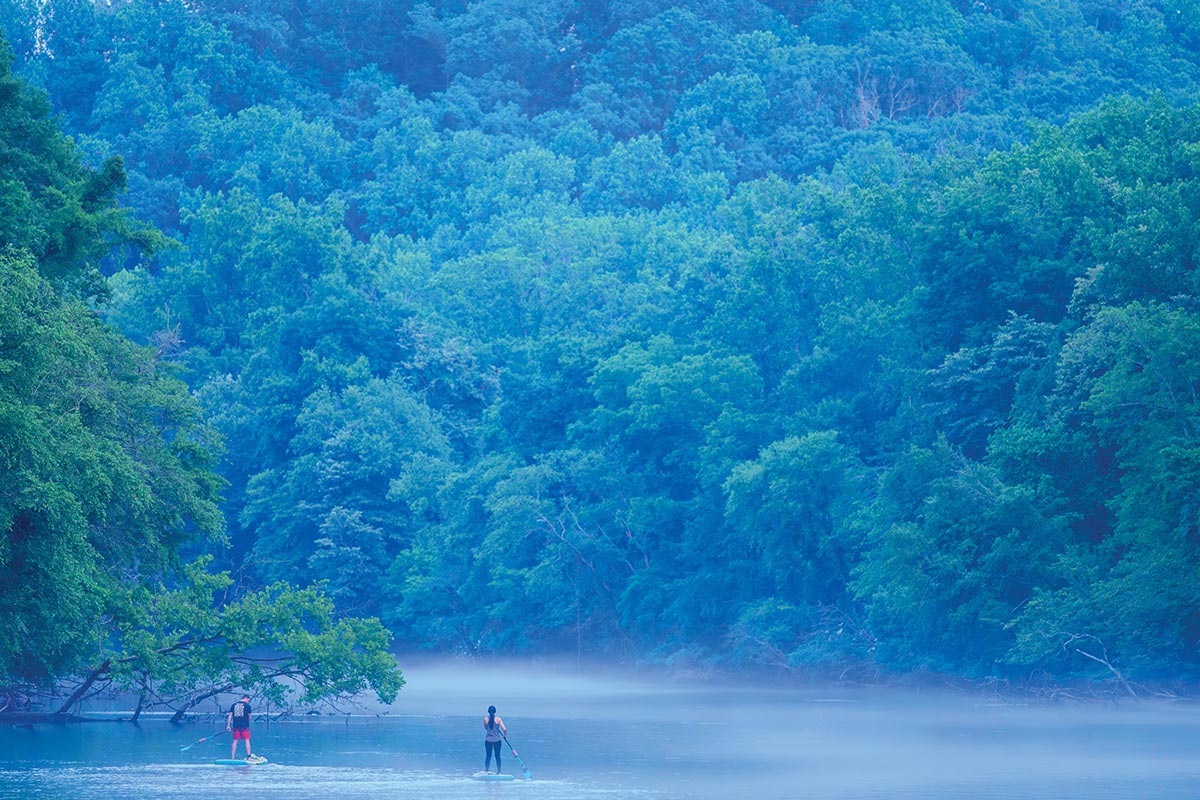
At twilight on the Chattahoochee River I handheld the camera with the lens extended to 320mm and took this image wide open at f/5.3, ISO 1600, for 1/125 second. I used the Nikon Z 8 subject tracking to focus on the paddleboarders.
Unlike the 70-200mm with its fixed physical size, the 100-400mm extends as focal length is increased. The minimum focusing distance ranges from 29.52 inches at 100mm to 38.64 inches at 400mm. At the minimum focusing distance, subject magnification is 0.38X. The curved edges of the nine aperture blades produce a nearly round aperture for a nice bokeh effect even when stopped down. The result is high contrast and color accuracy, even in backlit or high-glare conditions. The minimum f-stop ranges from f/32 to f/40 across the focal length range. Although there is a lot of glass to move, the two autofocus drive units ensure the autofocusing is fast, accurate, and quiet.
As with other S-line lenses, the 100-400mm has exceptional optical performance and build quality. The optical formula is complex: 25 elements in 20 groups. Used throughout the lens, Nikon’s Nano Crystal Coat and anti-reflective coating do an effective job of reducing ghosting and flare caused by stray light. A dust and moisture-repelling proprietary fluorine on the front element helps keep the lens clean. The front of the lens is threaded for 77mm filters. Befitting a lens meant for sports and wildlife photography and videography, multiple seals throughout the interior of the lens keep out dust and moisture. Included with the lens is a deep (2.75 inches at its deepest and 1.5 inches at its shallowest) tulip-type lens hood with a triple bayonet locking mount and a rotating detachable tripod mount.
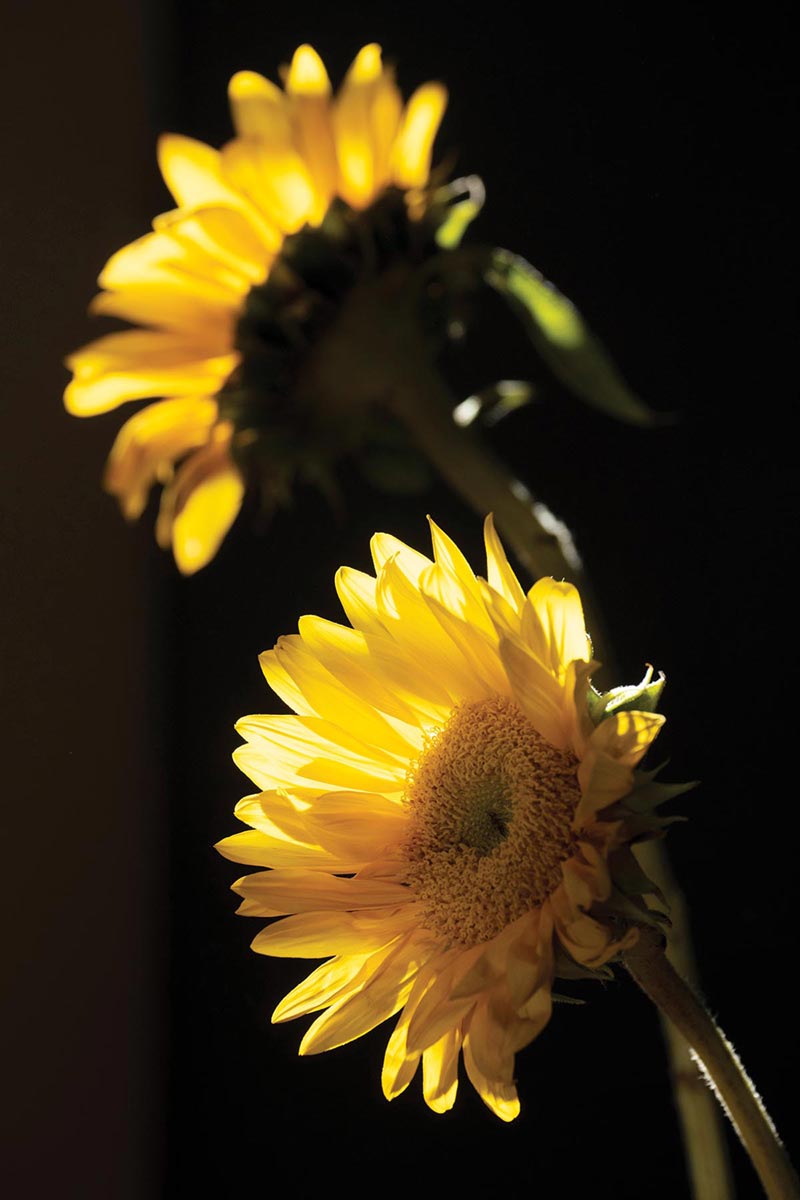
This floral still life was taken in morning sunlight with the camera mounted on a tripod and the lens at 290mm and stopped down to f/7.1.
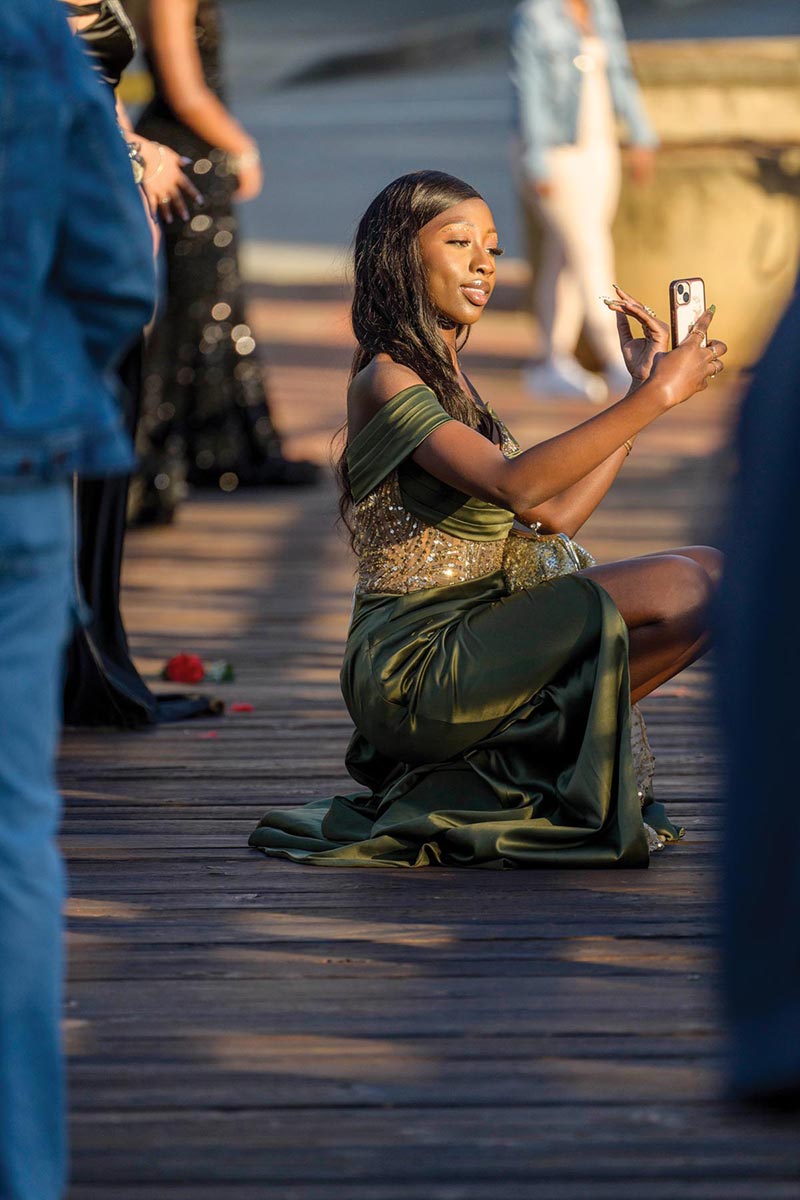
I photographed this high school senior with the lens at 400mm and VR and IBIS turned on. The exposure is 1/1,000 second at f/5.6, ISO 800.
Three rings and three sets of buttons provide multiple controls on the lens. From fore to aft, there is a dedicated 1.75-inch wide focal length selector ring, then a 1.25-inch wide focus ring, and a stepless aperture control ring near the back. The rubber ribbing on the first two rings makes them easy to operate even with gloves on. The size and feel of the ridges on the two rings differ, making them easy to distinguish from each other. The focal length ring has a heavier, more damped feel, and the aperture control ring has a checked metal surface.
The zoom ring marks out 100mm, 135mm, 200mm, 300mm, and 400mm. A quarter turn covers the entire focal length range. The short throw of the zoom ring made it easy to recompose while following fast-moving subjects. Focusing is a responsive focus-by-wire affair with virtually no lag when focusing manually.
The lens has two sets of programmable lens function buttons, four L-Fn2 buttons just behind the focal length control ring, and a lone L-Fn button on the left side of the lens behind the focus ring. The L-Fn and L-Fn2 buttons have 40 function options each, plus an off option, so there are 1,681 ways to configure lens operation. The L-Fn button works in conjunction with the focus ring.
Just before the aperture control ring is an OLED panel that can display focal length, f/stop, or focus distance. Focal length is shown in 5mm increments between 100 and 200mm and 10mm increments from 20 to 400. F/stop values are shown in one-third stop increments, and the distance scale incorporates a depth of field indicator. When used with Nikon’s newest full-frame camera, the Z 8, the depth of field indicator does not change when switching between full frame to any of the crop modes.
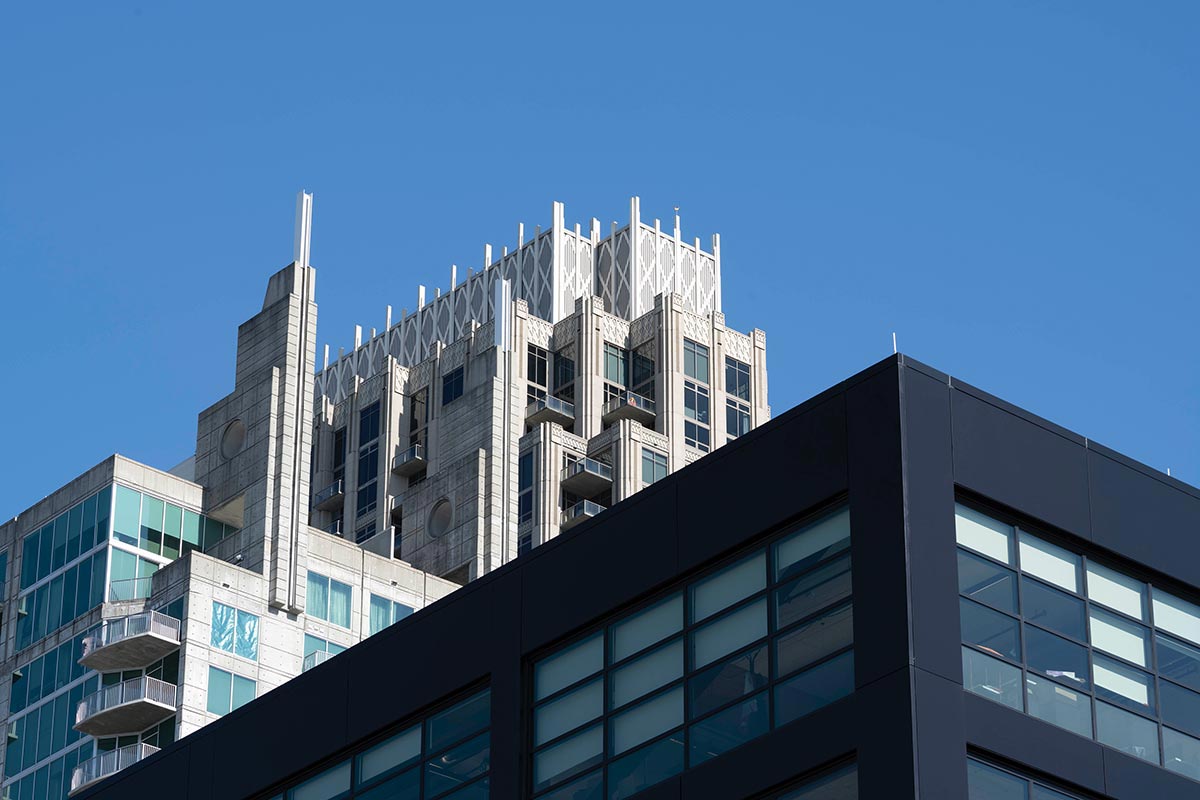
For distortion free architectural photography the Nikkor Z 100-400mm f/4.5-5.6 VR S is great choice for long shots.
The lens incorporates Nikon’s vibration reduction technology, which works in conjunction with the five-axis in-body image stabilization system to provide up to five stops of image stabilization. As a result, it works well for handheld shots, especially at longer focal lengths. Still, as with all such systems, it does not reduce the need for proper handholding technique: elbows against your torso, lens cradled in the left hand, and breathing out slowly and evenly while depressing the shutter button.
The Nikkor Z 100-400mm f/4.5-5.6 VR S is a fine lens—sharp, well balanced even when fully extended at 400mm, and versatile. I enjoyed my time with it and will be purchasing one. At $2,699.95 it’s not inexpensive, but it’s likely to be a long-term bargain given its blend of features and image quality.
Ellis Vener is a commercial and portrait photographer and a contributing editor to Professional Photographer magazine.

